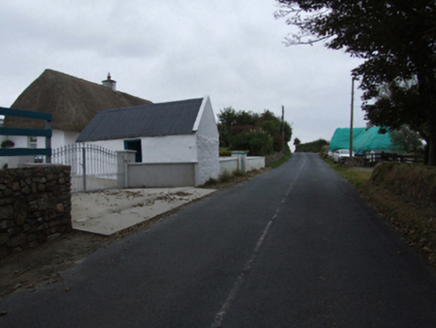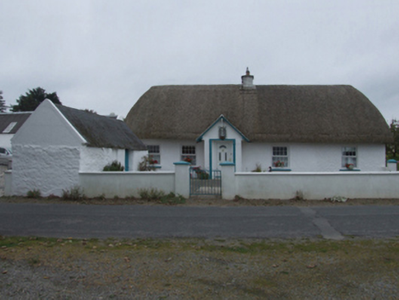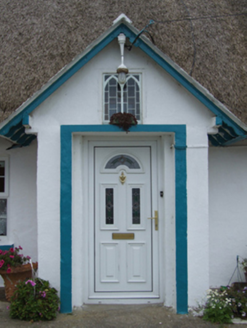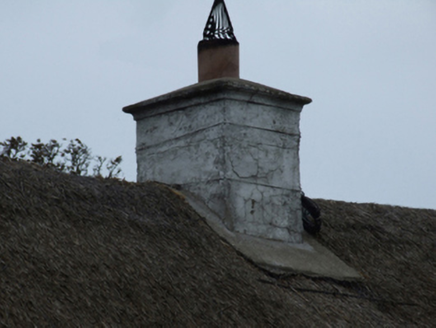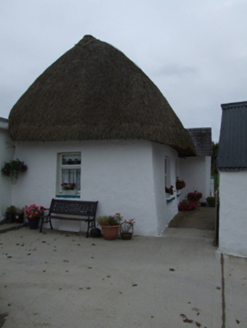Survey Data
Reg No
15703333
Rating
Regional
Categories of Special Interest
Architectural, Social
Original Use
Farm house
In Use As
Farm house
Date
1700 - 1840
Coordinates
311404, 129311
Date Recorded
30/09/2007
Date Updated
--/--/--
Description
Detached four- or five-bay single-storey lobby entry thatched farmhouse, extant 1840, on a T-shaped plan originally three- or four-bay single-storey off-centred on single-bay single-storey gabled projecting windbreak. Extended, pre-1903, producing present composition. Renovated, 2005. Chicken wire-covered replacement hipped oat thatch roof with blind stretchers to ridge having blind scallops, limewashed central chimney stack having "Cavetto"-detailed capping supporting terracotta pot, and exposed stretchers to eaves having exposed scallops. Limewashed rendered battered walls; limewashed roughcast surface finish (north). Square-headed off-central door opening in square-headed recess with concealed dressings framing replacement glazed uPVC panelled door. Paired square-headed (south) or square-headed (north) window openings with concrete sills, and concealed dressings framing replacement uPVC casement windows replacing one-over-one (south) or two-over-two (north) timber sash windows having part exposed sash boxes. Set back from line of road with cement rendered piers to perimeter having shallow pyramidal capping supporting wrought iron gate.
Appraisal
A farmhouse identified as an integral component of the vernacular heritage of County Wexford by such attributes as the lobby entry plan form off-centred on a characteristic windbreak; the construction in unrefined local materials displaying a battered silhouette with sections of "daub" or mud suggested by an entry in the "House and Building Return" Form of the National Census (NA 1901; NA 1911); the somewhat disproportionate bias of solid to void in the massing; and the high pitched roof showing a replenished oat thatch finish: meanwhile, a pronounced masonry break clearly illustrates the continued linear development of the farmhouse in the later nineteenth century. Having been well maintained, the elementary form and massing survive intact together with quantities of the original fabric: however, the recent (2005) introduction of replacement fittings to the openings has not had a beneficial impact on the external expression or integrity of a farmhouse forming part of a self-contained cluster alongside a diagonally-opposing house (see 15703332) with the resulting ensemble making a pleasing visual statement in a rural street scene.
